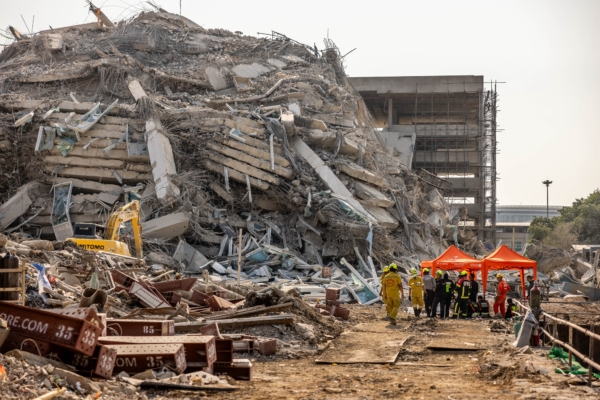Thai authorities announced that a Thai construction tycoon and 14 others surrendered to the police on Friday, May 16th, in connection with a building collapse in Bangkok in March that resulted in nearly a hundred deaths.
During a six-week rescue operation, rescue teams recovered 92 bodies from the collapse site, with 4 people still missing. The day before, a Thai court issued arrest warrants for 17 individuals involved in the building collapse incident, accusing them of negligence and violating building regulations.
The unfinished 30-story building, located in Bangkok and originally planned to be the office building for the National Audit Office, was the only Thai building to collapse in the aftermath of a 7.7 magnitude earthquake in neighboring Myanmar, raising questions about the quality of construction. The project was jointly carried out by the Italian-Thai Development Company and the Thai branch of China Railway Engineering Corporation (CREC).
Noppasin Poonsawat, Deputy Commissioner of the Metropolitan Police Bureau (MPB) in Bangkok, announced in a press conference that Premchai Karnasuta, the CEO of the Italian-Thai Development Company, and the other 14 individuals had surrendered to the police.
Noppasin stated that these 15 suspects were taken to the court for preliminary procedures and denied all charges.
An additional two suspects are expected to report to the authorities next Monday, May 19th.
The investigation into the cause of the collapse is still ongoing, marking one of Thailand’s deadliest construction accidents.
Noppasin mentioned, “Expert assessments indicate that the building design did not comply with ministerial regulations and did not meet the technical standards outlined in the reference clauses.” He also noted issues with the construction materials used, including substandard concrete and steel, as well as the discovery of forged signatures in the engineering documents.
An oversight organization pointed out shortly after the earthquake that the construction of the building may have involved corruption.
According to the Bangkok Post, investigations revealed “defects in the core structure of the elevator shaft and the use of substandard concrete and steel.” Thai media reported extensively on irregularities in the project, including suspicious documents and procedural lapses.
(This article references relevant reports from Reuters)

